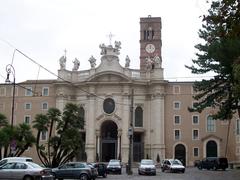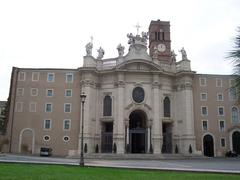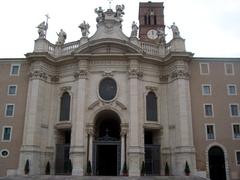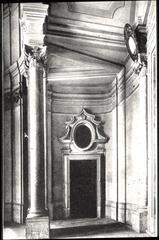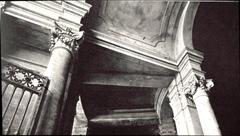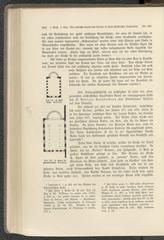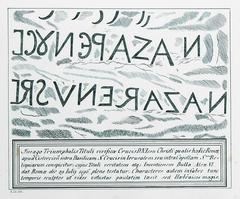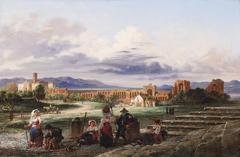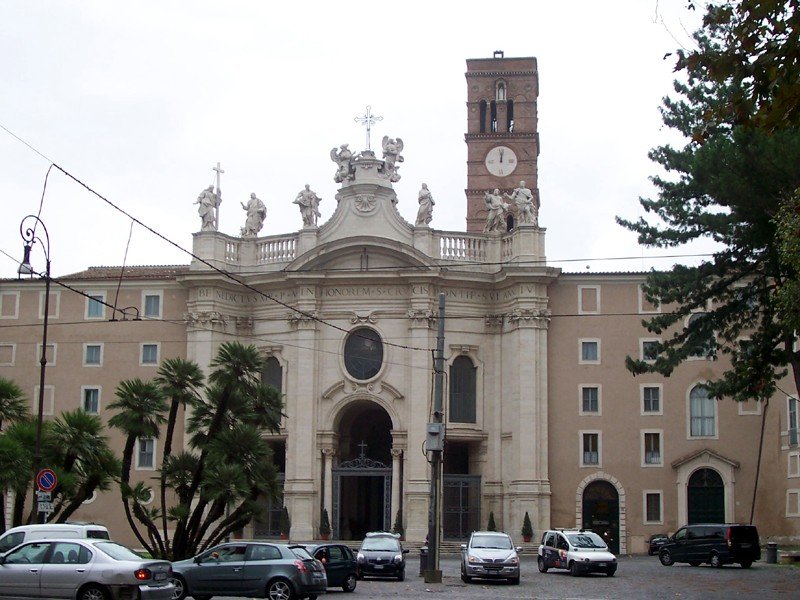
Basilica of the Holy Cross in Jerusalem, Rome: Visiting Hours, Tickets, and Historical Sites Guide
Date: 14/06/2025
Introduction
Located in the heart of Rome, the Basilica of the Holy Cross in Jerusalem (Basilica di Santa Croce in Gerusalemme) stands as a testament to centuries of faith, art, and history. Founded in the early 4th century by Empress Helena, the mother of Emperor Constantine, the basilica was established to enshrine relics of Christ’s Passion, including fragments of the True Cross and the Titulus Crucis. Over time, the basilica has evolved architecturally, blending early Christian, Romanesque, and Baroque elements, and today remains one of the Seven Pilgrim Churches of Rome.
This comprehensive guide provides essential information for visitors—covering visiting hours, ticketing, accessibility, and highlights of the basilica’s artistic and spiritual treasures. Whether you’re a pilgrim, an art enthusiast, or a curious traveler, the Basilica of the Holy Cross in Jerusalem offers an experience rich in heritage and meaning. For the most current details and updates, always refer to the official website and trusted travel resources (Santa Croce Official Site, Sacred Destinations, Pilgrimaps).
Quick Visitor Information
- Address: Piazza di Santa Croce in Gerusalemme, 1, 00185 Rome, Italy
- Opening Hours:
- Monday–Saturday: 7:00 AM–12:00 PM & 3:30 PM–6:30 PM
- Sunday & Holidays: 7:30 AM–1:00 PM & 3:30 PM–7:00 PM
- Admission: Free
- Guided Tours: Available upon request; audio guides recommended
- Accessibility: Wheelchair accessible with ramps and assistance available
- [Official Website: santacroceroma.it](#official-website:-santacroceroma.it)
Historical and Architectural Overview
Origins and Foundation
The basilica was founded between 320–325 CE as part of the imperial Sessorium palace complex. Empress Helena brought back relics from Jerusalem, including fragments of the True Cross, which were enshrined in a chapel. To symbolize the connection to Jerusalem, Calvary soil was spread on the floor, giving the basilica its name.
Architectural Evolution
- Early Christian & Medieval: The basilica began as a modest chapel and was expanded in the 8th century. The 12th-century Romanesque phase introduced the distinctive Cosmatesque mosaics and a nave with aisles.
- Baroque Transformation: In the 18th century, architects Pietro Passalacqua and Domenico Gregorini reimagined the basilica’s façade and interior, introducing lavish Baroque decorations, a new coffered ceiling, and frescoes by Corrado Giaquinto.
- Modern Restorations: The 20th century saw the creation of the Chapel of the Relics and the restoration of the monastic garden, balancing historical preservation with ongoing religious activity (Saves Lives Will Travel).
Spiritual and Cultural Significance
Relics of the Passion
The basilica houses several of Christianity’s most revered relics, which include:
- Fragments of the True Cross
- Titulus Crucis (the inscription from the cross)
- A nail from the Crucifixion
- Two thorns from the Crown of Thorns
- The finger of St. Thomas the Apostle
- A piece of the Penitent Thief’s cross
These relics, displayed in the Chapel of the Relics, have made the basilica a major pilgrimage destination, especially during Jubilee years and Holy Week (Pilgrimaps).
Symbolic Connection to Jerusalem
The basilica’s title “in Jerusalem” reflects the tradition of Empress Helena spreading Jerusalem soil within its walls, creating a spiritual extension of the Holy City in Rome (Catholic Shrine Basilica). This act has established the basilica as a focal point for pilgrimage and reflection.
Liturgical Traditions
The basilica is central to various liturgical and penitential traditions—most notably, the barefoot procession from the Lateran Basilica on Good Friday. Throughout the year, it hosts daily Masses, major feasts, and special veneration events (Port Mobility).
What to See: Artistic and Architectural Highlights
Chapel of the Relics
Located in the right transept, the Chapel of the Relics displays the Passion relics in glass cases. The setting is both reverent and educational, with marble and gilded decor enhancing the spiritual experience (Saves Lives Will Travel).
Chapel of St. Helena
Accessible via a staircase, this chapel features a statue of St. Helena and a vibrant mosaic ceiling—one of the few portraying a smiling Jesus. Tradition holds that Helena spread Jerusalem soil here (Saves Lives Will Travel).
Cosmatesque Floor & Nave
The basilica’s nave is renowned for its 12th-century Cosmatesque mosaic floor, gilded coffered ceiling, and Baroque ornamentation. The side chapels contain art and sculptures from different periods, offering insights into Rome’s evolving religious art.
Apse Fresco
The apse is adorned with a fresco depicting the Triumph of the Cross, attributed to Antoniazzo Romano and others, situating the basilica within the broader narrative of Christian salvation.
Shrine of Antonietta Meo
Near the Chapel of the Relics is the shrine of Antonietta Meo, a modern candidate for sainthood whose story of faith and suffering inspires visitors (Sacred Destinations).
Navigating the Basilica: Layout and Key Areas
- Main Nave and Altar: Enter to find a spacious, Baroque-decorated nave and the high altar, beneath which are relics of Saints Caesarius and Anastasius.
- Chapel of the Holy Relics: Ascend a staircase to view the Passion relics, including the Titulus Crucis and fragments of the True Cross (Sacred Destinations; Rome.us).
- Chapel of St. Helen: Descend to this atmospheric chapel, part of the original palace, below the current floor level.
- Shrine of Antonietta Meo: At the base of the stairs to the relics chapel, this shrine honors the young “Nennolina.”
Practical Visitor Information
Visiting Hours & Tickets
- Hours: Monday–Saturday 7:00 AM–12:00 PM & 3:30 PM–6:30 PM; Sundays and holidays 7:30 AM–1:00 PM & 3:30 PM–7:00 PM. Last admission is generally 5:00 pm, with closing at 5:20 pm—hours may vary on feast days (Santa Croce Opera).
- Admission: Free; donations are encouraged.
- Guided Tours: Book on site or online for deeper insights. Audio guides and themed itineraries are also available.
Accessibility
- The basilica is wheelchair accessible, with ramps and elevators to the nave and aisles. Some chapels in the transept may have limited access. Entry is prioritized for disabled visitors and their carers, with guide dogs welcome (Santa Croce Opera).
Visitor Services
- Free Wi-Fi in select areas
- Bookshop for guidebooks and publications
- Audio guides and apps for immersive exploration
- Group Visits: Groups up to 35 people; larger groups must use headsets
Getting There
- Located in the Esquiline district, near San Giovanni in Laterano. Closest Metro: San Giovanni (Line A); multiple bus routes serve the area. Parking is limited; public transit is recommended (Rome.us).
Nearby Attractions
- Basilica of St. John Lateran
- Baths of Caracalla
- Basilica of Saint Mary Major
Special Events & Guided Tours
Santa Croce in Gerusalemme is a station church during Lent, with the relics exposed for veneration on significant dates, especially the fourth Sunday of Lent and Good Friday, which features a papal procession (Sacred Destinations). Guided tours are available and highly recommended for a deeper appreciation of the basilica’s art and history.
Tips for a Memorable Visit
- Best Times: Early mornings or late afternoons are quieter.
- Dress Code: Modest attire (cover shoulders and knees).
- Photography: Permitted without flash; be respectful in prayer areas.
- Combining Visits: Explore the nearby Esquiline district and other major basilicas for a fuller experience (Rome.us).
Frequently Asked Questions (FAQ)
Q: Is there an admission fee?
A: No, entry is free. Donations are appreciated.
Q: Are guided tours available?
A: Yes, guided tours and audio guides are offered on site and online.
Q: Is the basilica wheelchair accessible?
A: Yes, with ramps and elevators. Some chapels may have limited access.
Q: Can I attend Mass?
A: Yes, regular Masses and special liturgical events are held.
Q: Can I take photos inside?
A: Non-flash photography is generally permitted. Always respect signage and staff instructions.
Notable Features at a Glance
| Feature | Description |
|---|---|
| Baroque Façade | Completed in 1744, with elegant pilasters and pediment |
| Nave Ceiling | Coffered and gilded, with decorative moldings |
| Chapel of the Relics | Houses Passion relics with marble and gilded ornamentation |
| Chapel of St. Helena | Statue of St. Helena, mosaic ceiling, Jerusalem soil tradition |
| Cosmatesque Floor | 12th-century mosaic artistry |
| Apse Fresco | Triumph of the Cross, attributed to Antoniazzo Romano |
| Atmosphere | Quiet, contemplative, less crowded than central basilicas |
Visuals
Caption: The Baroque façade of the Basilica of the Holy Cross in Jerusalem, completed in 1744.
Caption: The Chapel of the Relics showcasing sacred Passion relics.
Summary and Visitor Recommendations
The Basilica of the Holy Cross in Jerusalem is a living monument to Rome’s religious and artistic legacy, offering visitors the chance to venerate Passion relics, admire a tapestry of architectural styles, and participate in centuries-old traditions. Easily accessible by public transport and welcoming to all with free admission, it’s an essential stop for anyone exploring Rome’s sacred and historical sites. For additional resources, guided tours, and real-time updates, consult the official basilica website and consider downloading the Audiala app.
Sources and Further Reading
- Santa Croce Official Site
- Port Mobility
- Saves Lives Will Travel
- Sacred Destinations
- Rome.us
- Pilgrimaps
- Catholic Shrine Basilica
- Santa Croce Opera
- Rome on Foot
For more in-depth guides and virtual tours, download the Audiala app and follow our social media channels for updates and exclusive content about Rome’s most iconic landmarks.
